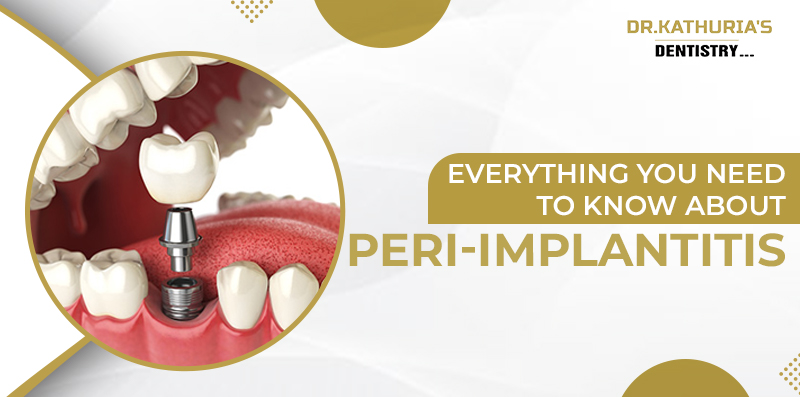In the world of dental health, a remarkable transformation has been taking place. Dental implants have emerged as a trusted solution for unexpected tooth loss, enjoying remarkable success and survival rates. However, a new challenge has emerged on the horizon – peri-implantitis. In this article, we will navigate the intricacies of peri-implantitis, shedding light on its definition, prevalence, diagnosis, risk factors, and treatment options.
What is Peri-Implantitis?
Defining peri-implantitis has been the subject of ongoing debate. Some experts consider it a complication arising from implant placement, while others classify it as a distinct disease. According to Dr Sween Kathuria, a leading cosmetic dentist, peri-implantitis is characterised by inflammation in the peri-implant mucosa and a continuous loss of supporting bone. In simpler terms, it’s a condition where inflammation and bone loss occur near dental implants.
Prevalence of Peri-Implantitis
The prevalence of peri-implantitis varies, with reports showing a relatively low percentage. While it may appear less common, peri-implantitis remains a significant concern, given its impact on dental implant longevity.
Diagnosing Peri-Implantitis
Diagnosing peri-implantitis is a critical step in managing this condition. The best cosmetic dentist for gaps in teeth often relies on a combination of oral examinations and radiographic imaging. Patients with peri-implantitis typically exhibit bleeding upon probing and visible signs of inflammation. Radiographs reveal marginal bone loss around the implant, confirming the diagnosis.
Risk Factors for Peri-Implantitis
Understanding the risk factors associated with peri-implantitis is crucial for prevention. Patients with sub-optimal plaque control and a history of significant periodontal issues face a higher risk for peri-implantitis. Additionally, those who neglect follow-up appointments with the best cosmetic dentist for gaps in teeth are more susceptible to developing peri-implantitis. The lack of adherence to the maintenance phase, particularly in cases of peri-implant mucositis, can contribute to its progression. However, the exact conditions triggering the disease’s advancement remain uncertain.
Treatment Options for Peri-Implantitis
Addressing peri-implantitis necessitates a multi-faceted approach. Initially, non-surgical treatments such as mechanical debridement and disinfection with specific mouthwashes may be attempted. In some cases, these methods may not yield the desired results, prompting the use of antibiotics to combat inflammation.
When non-surgical approaches fall short, surgical intervention may be recommended. Dentists use advanced techniques to clean implant surfaces thoroughly. Innovative methods ensure effective bacterial biofilm removal without causing harm to surrounding tissues, making the implant suitable for re-osseointegration.
Advanced cleaning methods employ electrolytic processes, generating hydrogen bubbles to lift the biofilm, ensuring a clean implant surface. Research has demonstrated their effectiveness in eliminating bacteria and biofilm without altering the implant’s surface.
To explore further insights into peri-implantitis and its treatment, consider consulting with Dr Sween Kathuria. Her expertise and cutting-edge techniques can help maintain the success of dental implants and safeguard your dental health.
Prioritise Your Dental Well-Being with Dr Kathuria’s Dentistry!
If you wish to ensure the continued success of dental implants and maintain a healthy and radiant smile, make sure to book your appointment at Dr Kathuria’s Dentistry. With the right diagnosis and risk management, our professionals provide you with advanced treatments. Don’t hesitate! Take the initiative today by connecting with us.
 Australia No
Australia No Canada No
Canada No India Toll Free No
India Toll Free No UK No
UK No USA No
USA No












